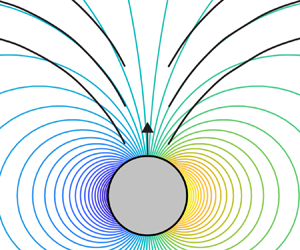Article contents
Boundary effects on ideal fluid forces and Kelvin's minimum energy theorem
Published online by Cambridge University Press: 24 March 2023
Abstract

The electrostatic force on a charge above a neutral conductor is generally attractive. Surprisingly, that force becomes repulsive in certain geometries (Levin & Johnson, Am. J. Phys., vol. 79, issue 8, 2011, pp. 843–849), a result that follows from an energy theorem in electrostatics. Based on the analogous minimum energy theorem of Kelvin (Camb. Dublin Math. J., vol. 4, 1849, pp. 107–112), valid in the theory of ideal fluids, we show corresponding effects on steady and unsteady fluid forces in the presence of boundaries. Two main results are presented regarding the unsteady force. First, the added mass is proven to always increase in the presence of boundaries. Second, in a model of a body approaching a boundary, where the unsteady force is typically repulsive (Lamb, Hydrodynamics, 1975, § 137, University Press), we present a geometry where the force can be attractive. As for the steady force, there is one main result: in a model of a Bernoulli suction gripper, for which the steady force is typically attractive, we show that the force becomes repulsive in some geometries. Both the unsteady and steady forces are shown to reverse sign when boundaries approximate flow streamlines, at energy minima predicted by Kelvin's theorem.
Information
- Type
- JFM Papers
- Information
- Copyright
- © The Author(s), 2023. Published by Cambridge University Press
References
REFERENCES
- 1
- Cited by


